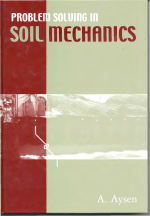Добрый день, Коллеги. Важное сообщение, просьба принять участие. Музей Ферсмана ищет помощь для реставрационных работ в помещении. Подробности по ссылке
Problem solving in soil mechsnics / Решение проблем в механике почв
Problem Solving in Soil Mechanics is primarily designed as a supplement to Soil Mechanics: Basic Concepts and Engineering Applications, but can be used as an independent problem solving text, since there is no specific reference to any equation or figure in the main book. This book is written for university students taking first-degree courses in civil engineering, environmental and agricultural engineering. Its main aim is to stimulate problem solving learning as well as facilitating self-teaching. The book is written with the following objectives:
1. To present the solution of unsolved problems of Soil Mechanics: Basic Concepts and Engineering Applications.
2, To provide all necessaiy methods, equations and figures in a clear step by step explanation of the solution to each problem.
Each chapter is composed of three sections: introduction, worked examples and references for further readings. In the introduction section, the main objectives and the range of problems covered are presented. The second section includes those unsolved problems of the corresponding chapter in the main book. The summary of the theory including equations and figures are described within the solution of each problem.
The special structure of the book makes it possible to be used in two, three and four year undergraduate courses in soil mechanics. However, as new and advanced topics are included, the book will also be a valuable resource for the practicing professional engineer,
The use of S.I. units throughout, and frequent references to current international codes of practice and refereed research papers, make the contents universally applicable. This book is written for readers that have prior knowledge in soil mechanics; however, necessary basic information is included in each worked example.
The author is grateful to those scientists and authors whose methods have been used in the solution of the worked examples of this book. The author is also grateful to Professor A. S. Balasubramaniam of Griffith University, Australia for his continuous encouragement.
I am in debt to my family, especially my wife Pari, for her support and patience during this project.




